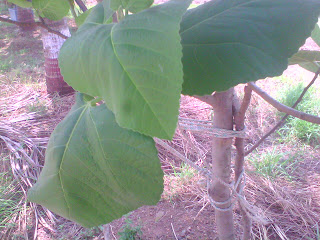Medicinal plants have been used for thousands of years to treat various ailments and maintain health. They contain bioactive compounds with therapeutic properties. Here are some common medicinal plants and their uses:
Aloe Vera (Aloe barbadensis miller): Known for its soothing properties, aloe vera is used topically to treat skin conditions like burns, cuts, and sunburns.
Ginger (Zingiber officinale): Ginger has anti-nausea and anti-inflammatory properties. It's commonly used to alleviate nausea, motion sickness, and digestive issues.
Echinacea (Echinacea purpurea): Echinacea is believed to boost the immune system and reduce the severity and duration of colds and respiratory infections.
Peppermint (Mentha piperita): Peppermint is used for digestive issues, such as indigestion, bloating, and gas. It may also help with headaches and sinus congestion.
Lavender (Lavandula angustifolia): Lavender essential oil is known for its calming and relaxing effects. It's used in aromatherapy to reduce stress and promote better sleep.
Chamomile (Matricaria chamomilla): Chamomile has anti-inflammatory and calming properties. It's used to treat insomnia, anxiety, and digestive discomfort.
Turmeric (Curcuma longa): Turmeric contains curcumin, a powerful anti-inflammatory and antioxidant compound. It's used to reduce inflammation, alleviate pain, and support joint health.
Garlic (Allium sativum): Garlic has antimicrobial and immune-boosting properties. It's used to lower cholesterol, manage blood pressure, and enhance the immune system.
Ginseng (Panax ginseng): Ginseng is believed to improve energy levels, boost cognitive function, and reduce stress.
St. John's Wort (Hypericum perforatum): St. John's Wort is used to treat mild to moderate depression and anxiety.
Eucalyptus (Eucalyptus globulus): Eucalyptus oil is used for its decongestant and antimicrobial properties. It's commonly used in inhalations and chest rubs to relieve respiratory symptoms.
Milk Thistle (Silybum marianum): Milk thistle is known for its liver-protective properties and is used to support liver health and detoxification.
Valerian (Valeriana officinalis): Valerian root is used as a natural remedy for insomnia and anxiety.
Fenugreek (Trigonella foenum-graecum): Fenugreek seeds are used to regulate blood sugar levels and promote lactation in breastfeeding mothers.
Ginkgo Biloba (Ginkgo biloba): Ginkgo is used to improve memory and cognitive function and is often used by people with Alzheimer's disease or dementia.
It's important to note that while many medicinal plants offer potential health benefits, they can also interact with medications or have side effects. Consult with a healthcare professional before using medicinal plants, especially if you have underlying health conditions or are taking medication. Additionally, some plants can be toxic if consumed in large quantities, so use them with caution and in moderation.
medicinal plants imagesimages of anjeer , shankashur , markhamia, pudina and more..

Shankashur Image

Anjeer Image










